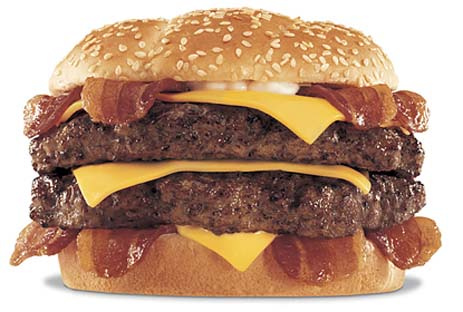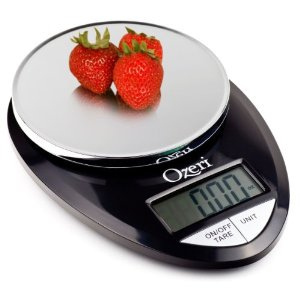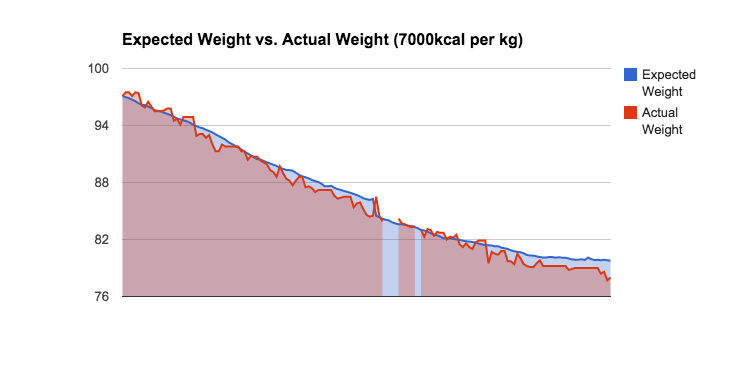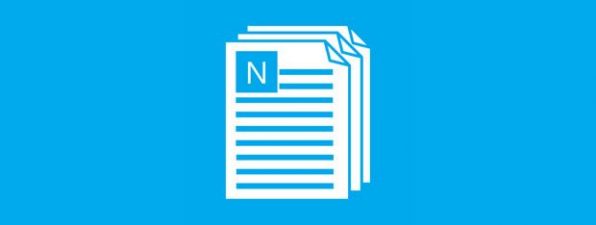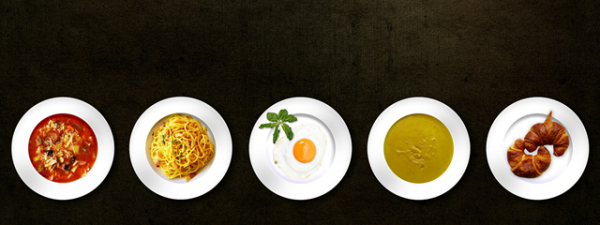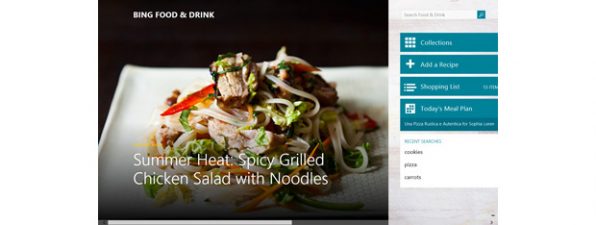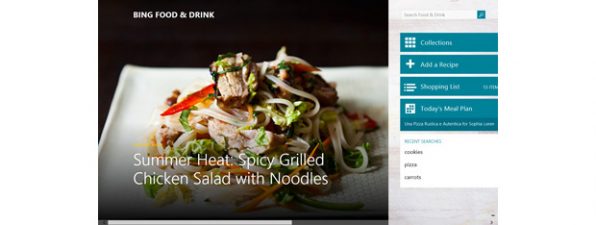
In a previous article I have discussed about the benefits and pitfalls of logging your food and the conclusion was that there is ample reason for one to log the food intake. Especially when we want to lose some weight or to maintain that lost weight. But how do you actually log your food? To help you, I would like to share my experience on this topic and discuss several strategies for logging your food intake:
NOTE: In my quest for logging my food intake, I ended up using the MyFitnessPal mobile app, which is available on all major mobile platforms, including Windows Phone.
Logging Your Food Must Become A Habit
Food logging has its specific challenges. It's a new habit that has to be created and maintained. It needs good memory and observation skills during a time in which we're all vulnerable (when we're hungry). But the data obtained from this habit can be priceless. I have seen cases where the simple awareness created by proper food logging itself has worked wonders, rivaling established methods such as personal trainers or nutritionists.
Before anything, you need to have a very good reason to do food logging. Beware that your reason might change over time. I started out with weight loss, and migrated towards a more balanced diet and longer term statistics about what I eat.
Without a good reason, you may lose interest in this habit pretty quickly. I remember my fitness coach telling me a few years ago to write down what I eat, without getting into any details about why do it, and how to do it. I failed miserably and lost interest in it in less than a week. Now I feel amused when I think about that. I have over 9 months of complete data that I want to publish at some point as open-source (I previously published my biometrics data from March 2014). And I will keep doing it as part of my daily routine.
When To Log The Food That You Eat?
The easiest way is to log it immediately after you eat. However, this might turn out to be awkward in certain social contexts. Consider you are going out with friends for dinner and you stop the conversation with them to log your food intake. Having put myself through this a couple of times, I decided to remember the food I ate for a couple of hours instead and enter it when I have the chance. I still prefer to do it on the spot when I can, and that is most of the time.
Other strategies I have seen are:
- Logging everything in a fixed moment of the day. This requires both having a pretty good memory and disciplined eating habits. Frequent between-meal snacks will ruin this in the long term. Oh, but wait, maybe you don't need those snacks anyway 🙂
- Logging before eating the meals that are planned. This is especially easy for people who are doing the cooking (and thus the food planning) for their family. They know with precision what they will be eating and when. Also, they know very well what the ingredients are and their proportions.
- Using pen-and-paper as a buffer throughout the day, that is then transferred at a predefined moment (say, evening) into the electronic form. I myself used this while my smartphone was broken.
One interesting side-effect of food logging is that you realise that your food intake is much more repetitive than you ever thought. Which allows you to plan for your meals better and end up in the "logging before the meals that are planned" bucket more frequently than you think.
Do you have an alternative strategy for logging your food? I would like to hear about yours.
The Most Frequent Reasons For Not Logging Your Food Intake
Of course, we are not always able to log our food intake perfectly. Do we need to? As long as we have a very good understanding of what we eat, probably not.
Here are some of the reasons why you may stop logging your food intake on a regular basis:
At the very beginning it can be very frustrating to log the food that you eat. We do not know how to use the mobile app on our smartphone or how to search for food items efficiently. I have found the MyFitnessPal app to be particularly effective when scanning supermarket item barcodes because it has a huge database of foods from around the world. Also, its search feature makes it quite comfortable to search for items bought from the market or whose barcodes are not found.
- It takes a lot of time. You know, I have interviewed a couple of people who do log their food on a day to day basis. All of them say it is really easy and takes under 5 minutes. Are you sure you don't have 5 minutes in your day that could be better spent by investing in your future?
- It's morning and I am in a rush to get to work/to start work. Yes, but nobody says you have to do it immediately after breakfast. You will laugh, but I sometimes do it while driving to work if I get stuck in traffic. You can easily log your food later, you just have to pay attention to what you are eating while you are eating and try to remember it. I will provide details about this later in the article.
- In the evening I am really tired and feel like crashing. Of course you do, we all do. That is why sleep is useful 🙂 But if you are eating too much to remember the next morning, or the foods are too complicated, you might have your problem right there. Myself, I am practicing intermittent fasting so I almost always skip dinner completely.
- I am on vacation, and logging the food feels like "work" (or I don't have a proper internet connection). Well, you can easily log your food intake while in vacation by using pen and paper. I was actually forced to do that in August 2014 when smoke came out of my smartphone and I was left completely disconnected from the online world for several days in a beautiful secluded seaside village in Romania. I was still finishing my weight loss back then, so at first I panicked. But I then realised there is no reason not to log the food using pen and paper and enter it later. The only time when I could just not find mental energy to do it was during a 5-day trip to the USA which had a schedule so packed that I barely got to sleep at all.
- I am eating at a chinese place/salad bar/tapas bar and thus am tasting quite a lot of foods. Yes, this can mean that you eat a lot of types of foods in one meal, but overall, how many types can there be that you eat regularly? Not more than 20-30, I presume. Gradually investing in adding them one by one to the database of foods that you are using (MyFitnessPal allows user-generated entries) will make it easier and easier to enter what you eat. Remember, Rome wasn't built in a day! So there is no reason to expect that you will get it right in difficult circumstances from day one.
How I Managed To Create The Habit For Myself?
Honestly, I treated this one as any startup task: investing as little energy as possible and trying to obtain good results. Repeating until I had good control over my food information or failing and stopping to use the same strategy.
In the first 2 weeks, I used a Google Spreadsheet where each cell corresponded to a meal. I would quickly scribble some phrase in the cell and get back later when I had time to estimate the calories by hand, using a web calories database. Why did I do it in such an inconvenient way? I wanted to spend as little mental energy as possible to learn new software, its strengths and weaknesses, and only after I proved to be very interested in doing it to invest more.
I also had a very relaxed target of filling 12 meals per week (instead of the total of approximately 21). This was because I am a big believer in small increments that are sustainable. Therefore, I made sure that I did not feel guilty for not getting all the meals at first, but rather managed my own expectations. Being the competitive person that I am, I exceeded my weekly goal pretty quickly, and within a month I was logging almost everything.
What I realised during this learning period were several things:
- Weight loss is mostly a problem of food planning and knowing yourself.
- Some people avoid food logging because it "takes up time" and "it is inaccurate". That is the reason for a number of vaporware products such as the Healbe GoBe that claimed to solve this seemingly important problem. But in fact you do not need perfectly accurate data, and given a good enough benefit, you will be willing to enter the data by hand.
- You repeatedly eat the same stuff more often than you think. MyFitnessPal helps you in that respect by keeping a readily available list of the most frequently used foods for every meal.
Recommendations For Estimating Your Food Intake
First of all, learn to look at the plate before indulging. One or two months into logging my food, I found myself scanning the contents of the plate during breakfast. I've also discovered that when eating out, I entered the food after ordering and before they brought it just because the main ingredient quantities were available in the menu. That was especially easy to do since I decide very quickly what to get and am able to log it while other people are still deciding. Then I decided to do it consciously. It only takes a bit of will (even though the impulse when you are hungry is quite strong).
This has led me to learn a very important skill: estimating the quantity of food just by looking at it ("eyeballing"). I will detail later how to train that muscle. Visually scanning the food allows me to log it later, if I do not immediately have time to do it or do not want to. This plays nicely with my personal philosophy that you should avoid delaying the most pressing issues when starting the day at any cost.
It also gives me a better overview of what I am eating as a whole. Previously, I would fill my plate with 1 or 2 ingredients, and keep going back to the fridge to fill it some more. This back and forth disturbed my conversation with the people eating with me and also made me completely unaware of what was actually going into my belly.
While teaching people how to log their food when eating out, I've found it quite useful to visually scan the food before eating it to determine which are the main ingredients that should be logged, and their quantities.
One nice side-effect of food logging that I found is that I tend to eat much simpler foods right now. Maybe I'm too lazy to log the more complex ones, but I rediscovered a lot of simple tastes that I had completely forgotten about.
Now, onto the quantities. Correct food logging means identifying the right ingredients and entering the correct quantities that you are eating. As I started to log my food, I wanted to develop a sustainable method to estimate the food quantity that would help me both at home and when away. This means that I cannot rely on the electronic scale, except for training my estimating skills. Some observations that were helpful for me:
- You are not looking for perfection. You are looking for statistically relevant food quantities. In my case, statistically relevant meant that I could predict my actual weight with a decent error rate starting from my food log data and calorie burn data.
- Consider over-estimation (for weight-loss and maintenance), or under-estimation (for weight gaining). Since I am in the first bucket, I constantly over-estimate with 10-15% (except maybe for the case when you are weighing them using an electronic scale).
- Choose a version of the food that is not an outlier. The entry should have all the main ingredients entered (proteins, fibers, fats, etc.) and also should not have a disproportionately low/high number of calories. Myself, I eliminate the lowest and highest values and choose somewhere above the middle. This accounts for the different styles of cooking for the same dish. For example, french fries might contain more oil or less, and be cooked with sunflower or palm oil.
How To Deconstruct Food Into Ingredients
Food estimation breaks down to estimating a single ingredient. Why? Scientists are just beginning to struggle to understand the effects of cooking and preparation on raw ingredients on mice and not yet on humans. See here and here for studies on how cooking one or more multiple ingredients together affects the total number of calories. But none of these preliminary experiments show a difference of more than 10-15% between the raw ingredient and the cooked ones, and that error rate for the purpose of amateur-level food logging statistical relevance is enough.
Whenever I eat a more complex food, I try to evaluate its main ingredients (the ones which contribute more calories to it). And by overestimating their quantities (just like I mentioned before), I am also able to account for the effect of the preparation method. If I am having a busy day or am really tired, I will only log the top 2-3 ingredients in order to have a rough estimate of what I am eating. As mentioned earlier in this article, food logging brings awareness with it that will cause you to eat simpler foods, thus decreasing the number of such situations in the longer term.
To give one quick example, in a cheeseburger you will be interested mainly in the bread bun, the meat pattie, the cheese itself, bacon and any sauce (if it is in a non-negligible amount).
How To Estimate The Quantity Of Food That You Are Eating
For the quantity, I started out by visually observing the density of the main food ingredients by buying packaged food from the supermarket and using up rounded subdivisions of the bigger package (e.g. one fourth, one half). I also held the empty plate into my hand, and put the actual ingredient in the plate to learn how the actual weight of the ingredient feels on your hand. Note that this works best with plastic dishes, which are lighter. I know, it's not environmentally friendly, but it's a learning process!
3 months into my food logging, my wife received an electronic scale as a gift. By that time I was already logging food at home, at work, and while I was away on vacation or business trips, so naturally I started to use it myself. I mainly use it to train my weighing skills, especially for more difficult ingredients. One good example here is the avocado, whose seed weighs a very significant amount of the total weight. By using the scale, I learned that I was exaggerating my over-estimations of the avocado.
Conclusion & Personal Results
How do I know these techniques work? Well, while losing 23 kg (50 pounds) of weight during this year, I plotted my expected weight (using data from calorie burns and the food log) against my actual weight.
As you can see, the estimation works quite well! The emerging difference towards the end of the graph is due to the over-estimation technique previously mentioned.
Food logging is a daily habit that can take up to 5 minutes per day once you are well trained in doing it. There are a lot of challenges, starting from creating the habit, to correctly selecting the ingredients from the food database, and estimating their quantities. Last but not least, business trips and vacations, as usual, disrupt our routine.
Logging my food for 9 months has been a wild ride, with so much I have learned about myself and my habits! I have described all my small struggles, and all the small victories (eyeballing, over-estimation, being able to predict my weight). If a former naysayer like me can do it in under 5 minutes a day, you can do it too!
Andrei Ismail is an experienced software engineer with startup experience under his belt and a PhD in Artificial Intelligence. He has lost 50 pounds in 6 months.





